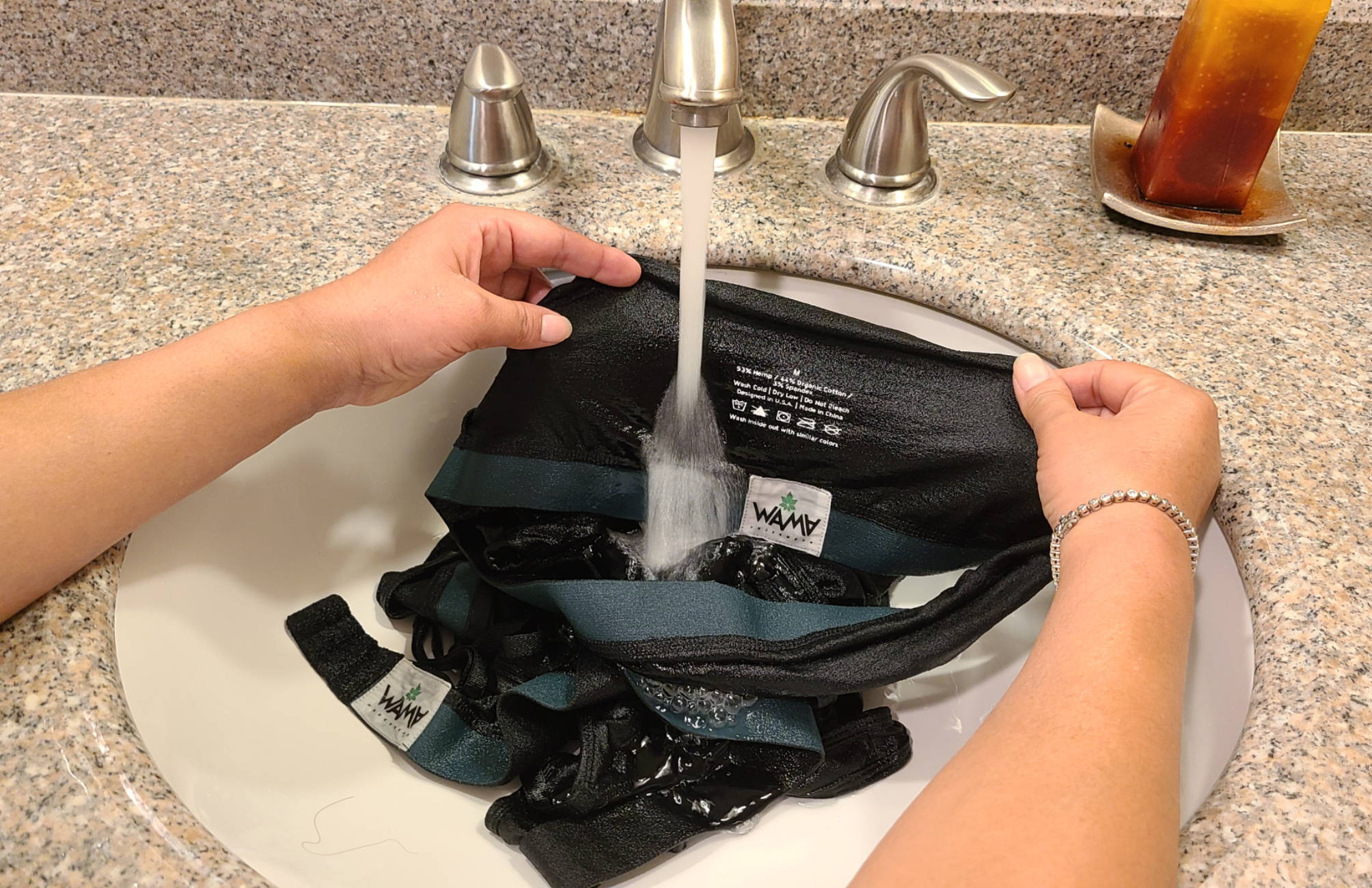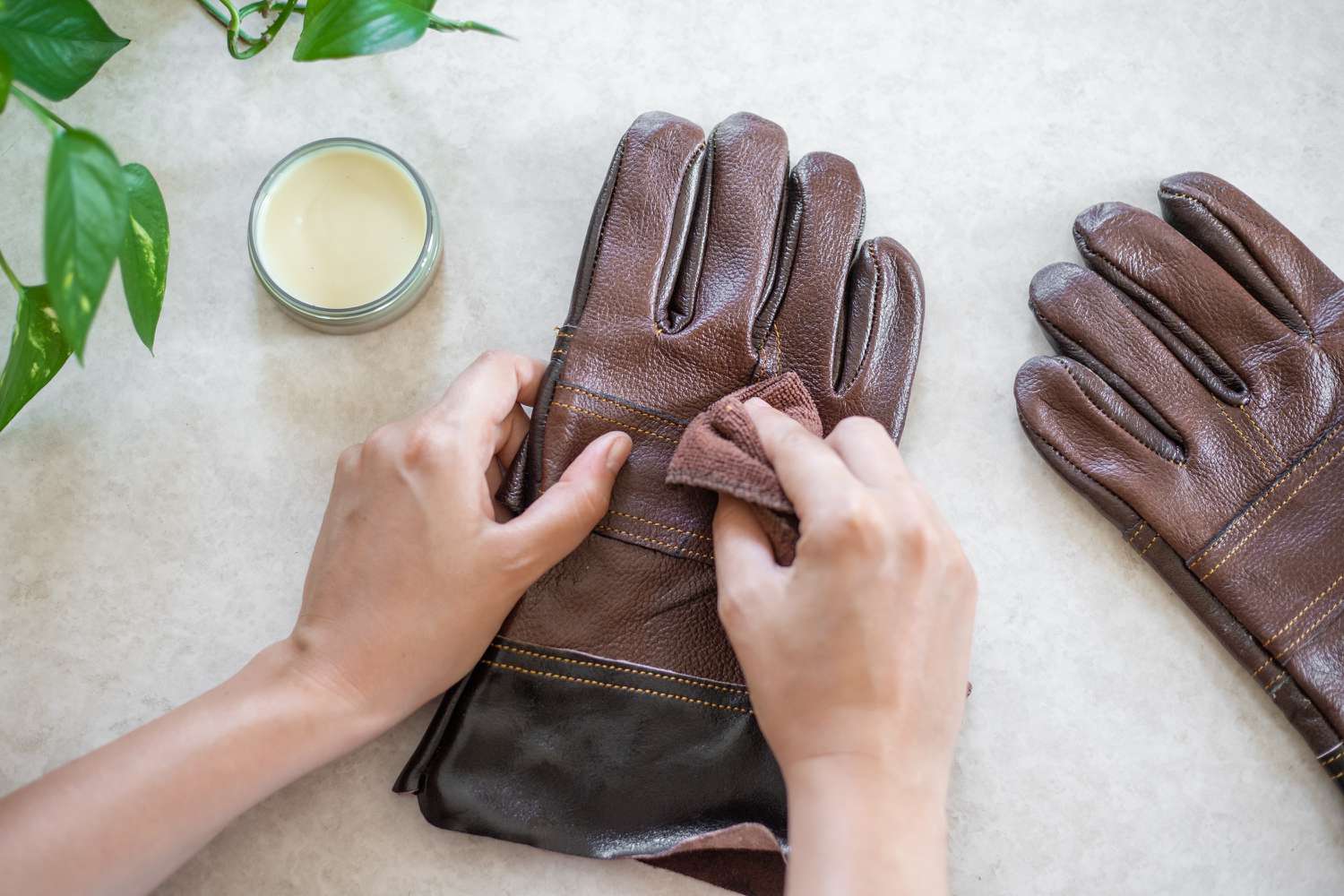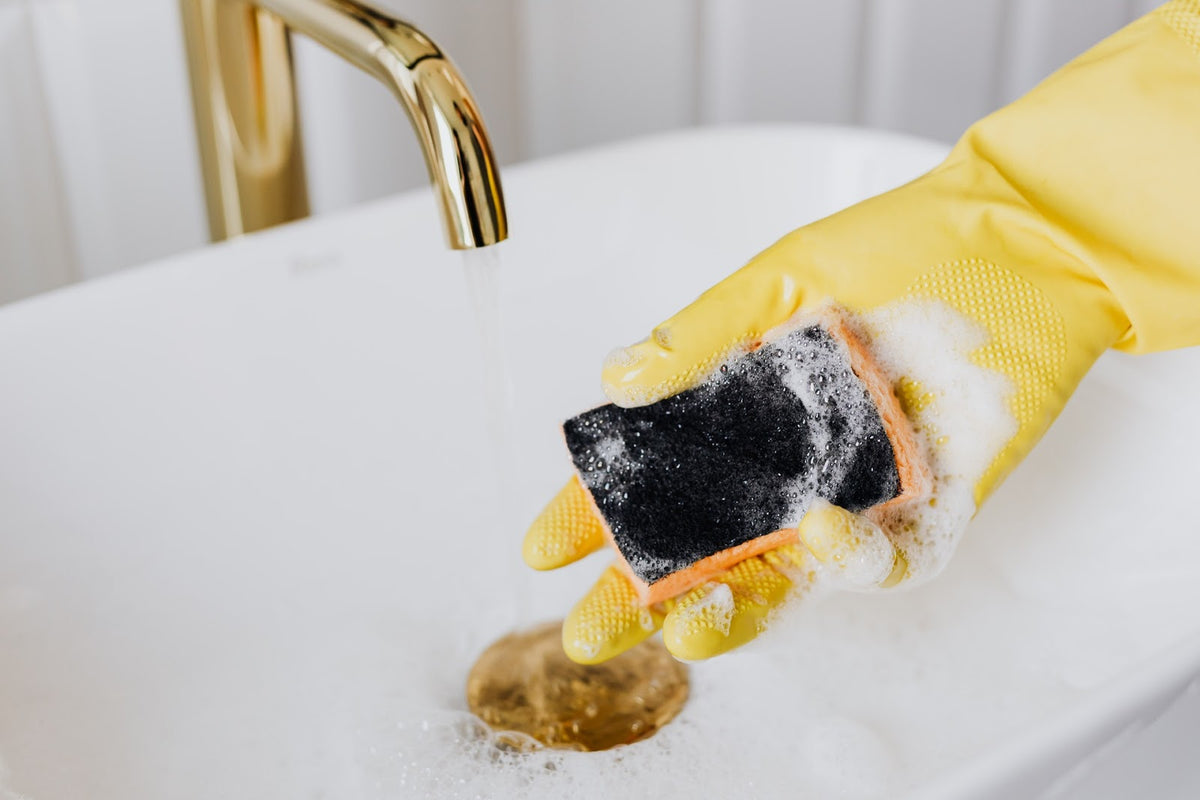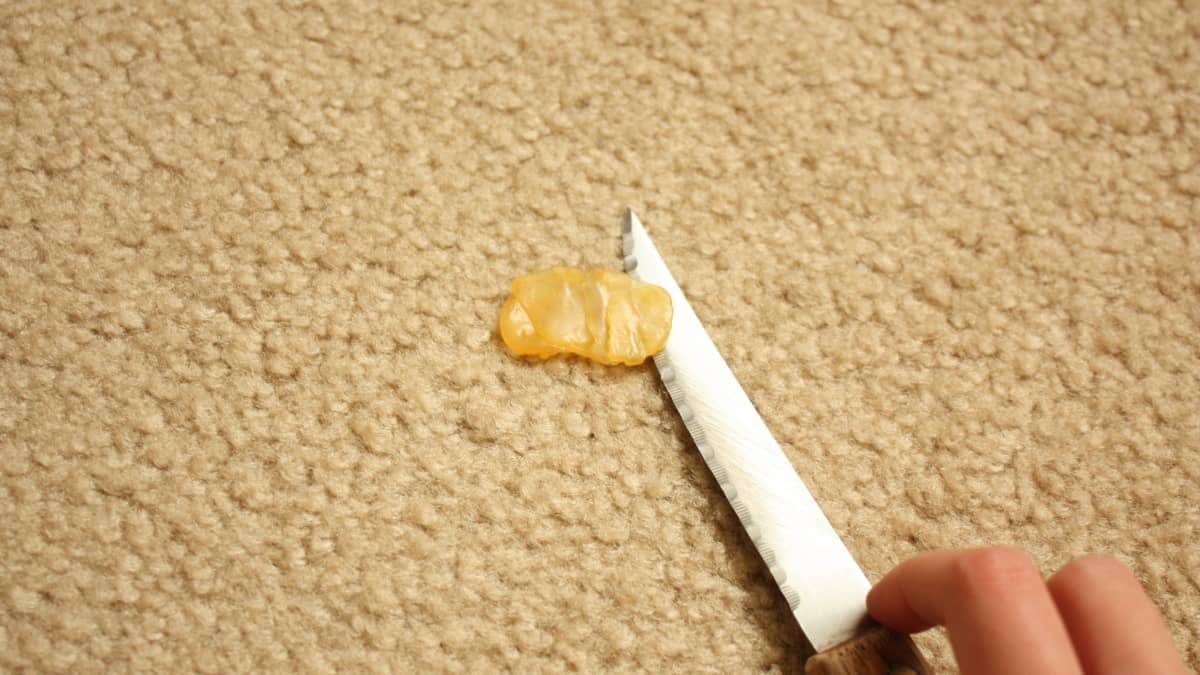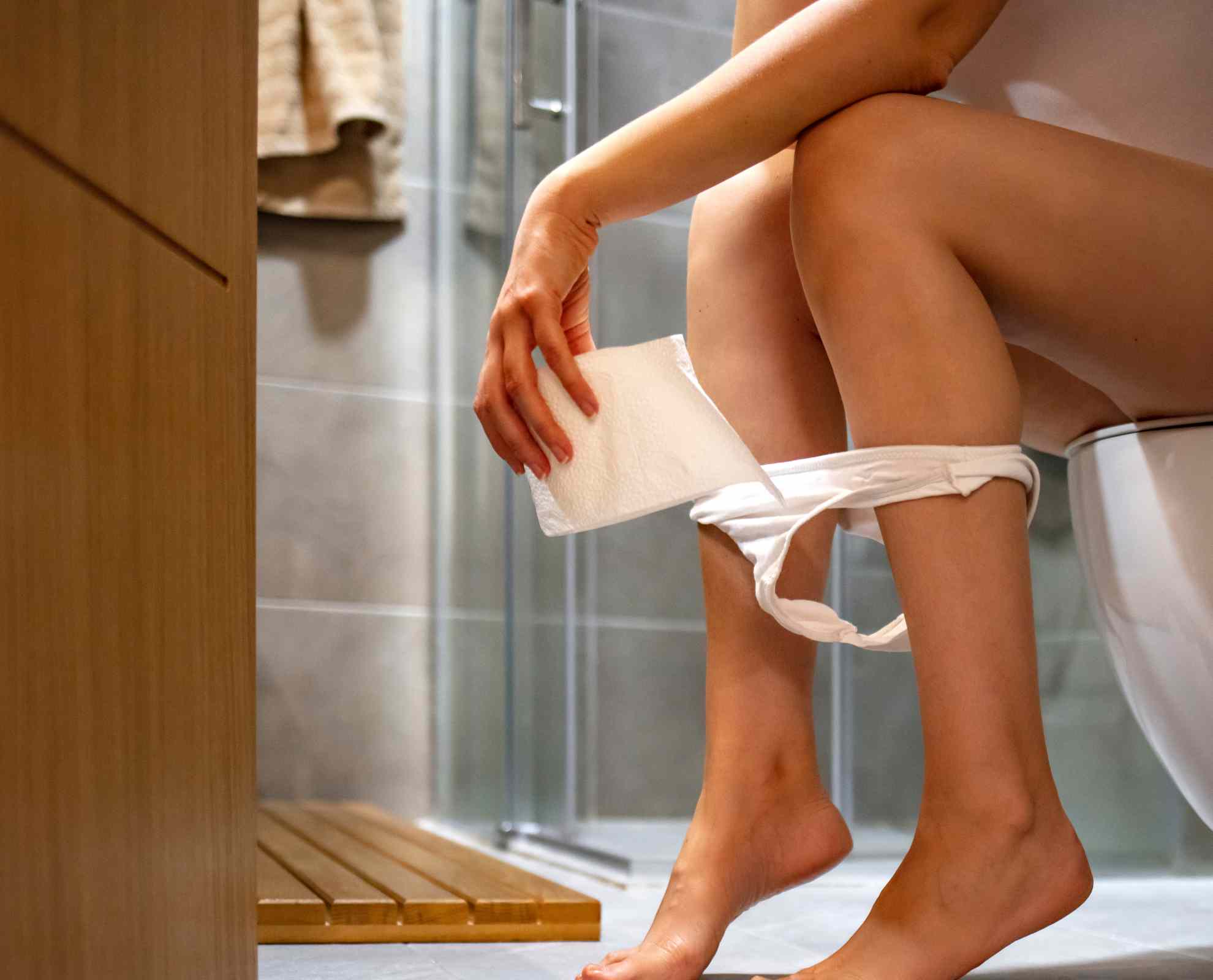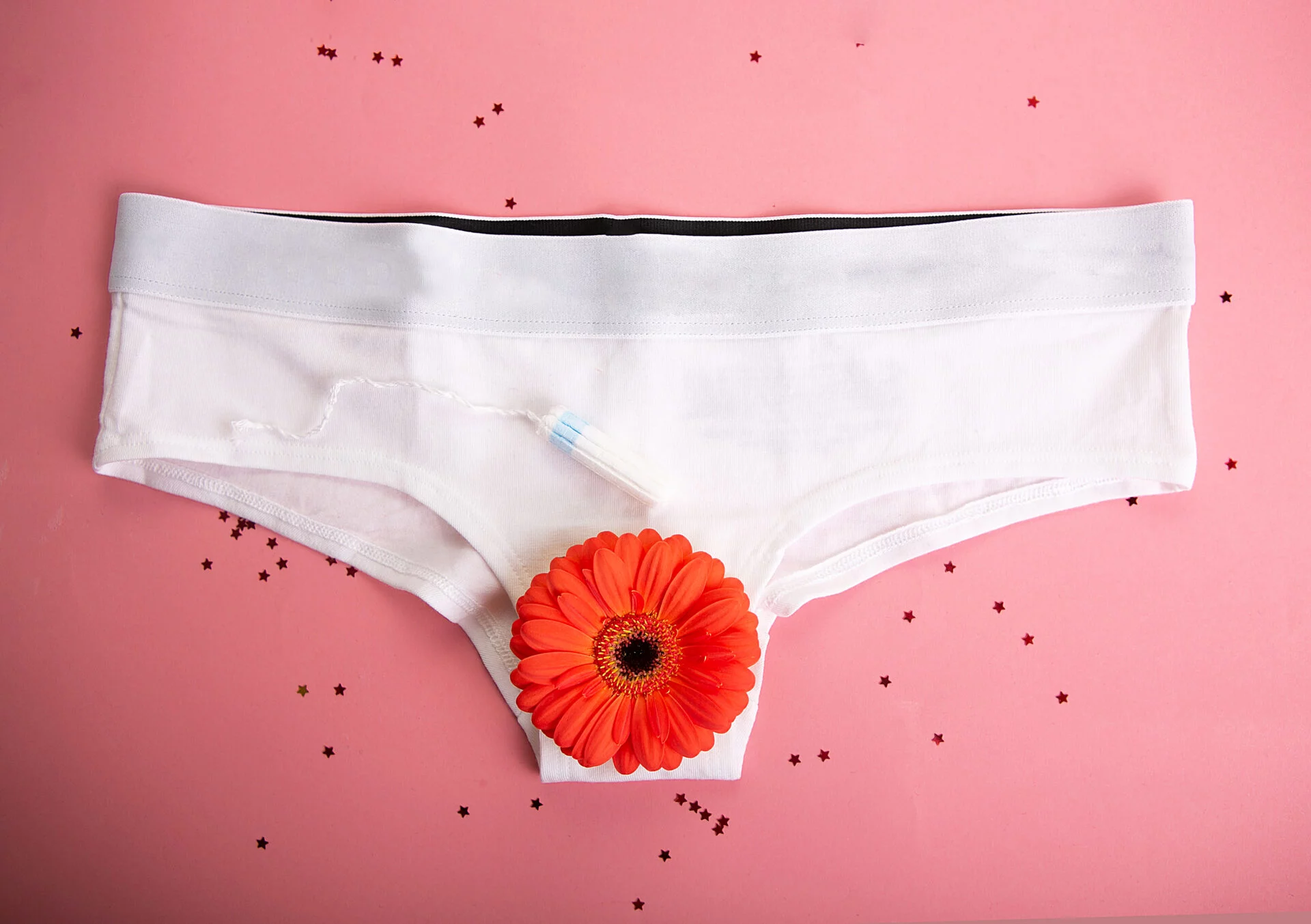Home>How-to Guides>For Women>How To Get Chlorine Out Of Swimsuit


For Women
How To Get Chlorine Out Of Swimsuit
Published: July 30, 2023
Learn how to easily remove chlorine from your swimsuit with these effective tips and tricks specifically designed for women. Keep your swimsuit looking and feeling fresh and chlorine-free.
(Many of the links in this article redirect to a specific reviewed product. Your purchase of these products through affiliate links helps to generate commission for Under-tec.com, at no extra cost. Learn more)
Table of Contents
- Introduction
- Why Chlorine Damages Swimsuits
- Precautions to Minimize Chlorine Damage
- Step 1: Rinsing the Swimsuit Immediately after Swimming
- Step 2: Soaking the Swimsuit in a Chlorine Neutralizer Solution
- Step 3: Hand Washing the Swimsuit with Mild Detergent
- Step 4: Drying the Swimsuit Properly
- Step 5: Using a Swimsuit Conditioner
- Step 6: Limiting Exposure to Chlorine
- Conclusion
Introduction
Swimming is a popular activity enjoyed by people of all ages, especially during the summer months. Whether you’re hitting the pool for recreational fun or participating in competitive swimming, it’s essential to have the right swimwear that not only looks great but also withstands the harsh effects of chlorine. Chlorine is commonly used to keep swimming pools clean and free from harmful bacteria, but it can be damaging to swimsuits over time. The chemical properties of chlorine can lead to fading, stretching, and even weakening of the fabric, making it crucial to take proper care of your swimsuit to prolong its lifespan.
In this article, we will explore the reasons why chlorine damages swimsuits and provide some essential steps you can take to minimize this damage. By following these precautions, you can ensure that your swimsuit stays in excellent condition, allowing you to enjoy many more swim sessions without worrying about premature wear and tear. So, let’s dive in and discover how to get chlorine out of your swimsuit effectively!
Why Chlorine Damages Swimsuits
Chlorine is a powerful disinfectant commonly used in swimming pools to maintain water quality and prevent the spread of bacteria. While it helps keep the water clean and safe for swimmers, it can wreak havoc on your swimsuit. Here are a few reasons why chlorine damages swimsuits:
- Chemical Reaction: Chlorine has a chemical composition that can react with the fibers in swimwear fabric. This reaction can cause the material to break down, resulting in color fading, thinning fabric, and weakening of elasticity.
- Bleaching Effect: Chlorine has a bleaching effect on fabrics, particularly on darker colors. Over time, exposure to chlorine can cause the colors in your swimsuit to fade, leaving it looking dull and worn out.
- Stretching: Chlorine can weaken the fibers in swimsuit material, making it more susceptible to stretching. Continuous exposure to chlorine can lead to the loss of shape and elasticity, causing the swimsuit to sag and not provide an optimal fit.
- Residue Build-up: Chlorine can leave residue on the fabric even after rinsing, which can accumulate over time. This residue can make the swimsuit stiff and uncomfortable, affecting its overall performance and longevity.
Understanding why chlorine damages swimsuits is crucial in implementing proper care practices. By taking proactive measures, you can minimize the impact of chlorine on your swimwear and extend its lifespan.
Precautions to Minimize Chlorine Damage
To ensure that your swimsuit remains in excellent condition and resists the damaging effects of chlorine, it’s important to take some precautions. By following these steps, you can minimize chlorine damage and enjoy your swimwear for more extended periods:
- Rinse Immediately: After swimming in a chlorinated pool, rinse your swimsuit with fresh water immediately. This will help remove any residual chlorine from the fabric, preventing it from causing further damage.
- Soak in Chlorine Neutralizer Solution: Prepare a chlorine neutralizer solution by following the instructions on the product. Soak your swimsuit in this solution for the recommended time to neutralize the chlorine and protect the fabric from damage.
- Hand Wash with Mild Detergent: Avoid machine washing your swimsuit, as the agitation can further stretch and damage the fabric. Instead, gently hand wash it using a mild detergent specifically designed for delicate fabrics. This will help remove any remaining chlorine and dirt without causing unnecessary wear and tear.
- Dry Properly: After washing your swimsuit, squeeze out any excess water without wringing or twisting the fabric. Lay it flat on a clean, dry towel and allow it to air dry completely. Avoid direct sunlight, as it can fade the colors and weaken the fabric.
- Use a Swimsuit Conditioner: Consider using a swimsuit conditioner or fabric softener specially formulated for swimwear. This product can help restore the elasticity and softness of the fabric, keeping it in excellent condition for longer.
- Limit Exposure to Chlorine: While it may not always be possible, try to limit your exposure to chlorinated water. Opt for swimming in natural bodies of water or use non-chlorinated pools when available. Additionally, take regular breaks from swimming to give your swimsuit a chance to dry off and recover from exposure to chlorine.
By following these precautions, you can minimize the damage caused by chlorine and ensure that your swimsuit remains in great shape for many seasons to come.
Step 1: Rinsing the Swimsuit Immediately after Swimming
After a refreshing swim, it’s crucial to rinse your swimsuit with fresh water as soon as possible. This step is essential in removing any residual chlorine from the fabric, minimizing its damaging effects. Here’s how you can properly rinse your swimsuit after swimming:
- Find a Water Source: Look for a nearby shower, hose, or tap that provides fresh water. This will allow you to thoroughly rinse your swimsuit without any added chemicals.
- Rinse with Cold Water: Cold water is the best option for rinsing your swimsuit, as hot water can further weaken the fabric. Gently pour the water over the swimsuit, ensuring that every part of the fabric is soaked.
- Focus on Problem Areas: Pay special attention to areas that are more prone to chlorine absorption, such as the crotch, straps, and bust. Spend a few extra seconds rinsing these areas to ensure complete chlorine removal.
- Avoid Wringing or Twisting: When rinsing, avoid wringing or twisting the swimsuit, as this can stretch and damage the fabric. Instead, gently press the water out with your hands or by lightly squeezing the material.
- Repeat if Necessary: If you were swimming in a heavily chlorinated pool or for an extended period, consider repeating the rinsing process to ensure all traces of chlorine are eliminated.
Rinsing your swimsuit immediately after swimming is a simple yet effective step in minimizing chlorine damage. By taking the time to rinse thoroughly, you’re giving your swimsuit a better chance of retaining its color, shape, and elasticity. So don’t forget to make this a regular part of your post-swim routine!
Step 2: Soaking the Swimsuit in a Chlorine Neutralizer Solution
Soaking your swimsuit in a chlorine neutralizer solution is an excellent way to counteract the damaging effects of chlorine on the fabric. This step helps remove any residual chlorine and neutralizes its chemical properties. Follow these guidelines to properly soak your swimsuit in a chlorine neutralizer solution:
- Choose a Chlorine Neutralizer: Look for a chlorine neutralizer solution specifically designed for swimwear. These solutions are readily available in sports stores or online. Follow the product instructions for proper usage.
- Prepare the Solution: Fill a basin or sink with cool water, following the instructions on the chlorine neutralizer product. Add the recommended amount of neutralizer solution to the water and mix it well to ensure even distribution.
- Soak the Swimsuit: Submerge your swimsuit into the prepared solution, making sure it is fully covered. Gently agitate the water to ensure the neutralizer penetrates the fabric fibers. Let the swimsuit soak for the recommended time, usually 15-30 minutes.
- Stir Occasionally: While the swimsuit is soaking, stir the solution every few minutes to promote the removal of chlorine residue from the fabric. This will help the neutralizer effectively do its job.
- Remove and Rinse: After the recommended soak time, carefully remove the swimsuit from the solution. Rinse it thoroughly with cold water to remove any remaining neutralizer solution and chlorine residue.
Soaking your swimsuit in a chlorine neutralizer solution is a crucial step in reducing chlorine damage. By neutralizing the chlorine, you can help preserve the fabric quality and extend the lifespan of your swimsuit. Incorporate this step into your swimsuit care routine for optimal results.
Step 3: Hand Washing the Swimsuit with Mild Detergent
Hand washing your swimsuit with a mild detergent is an essential step in maintaining its cleanliness and preserving the fabric’s integrity. Machine washing can be too harsh and cause unnecessary wear and tear, so it’s best to opt for gentle hand washing. Here’s how you can properly hand wash your swimsuit:
- Gather Supplies: Fill a basin or sink with cool water and add a small amount of mild detergent specifically formulated for delicate fabrics. Avoid using harsh chemicals or bleach, as they can further damage the swimsuit.
- Submerge the Swimsuit: Place your swimsuit in the soapy water mixture, ensuring it is fully submerged. Gently swish the swimsuit around to distribute the detergent and allow it to penetrate the fabric.
- Gently Cleanse: Use your hands to gently scrub the swimsuit, paying attention to areas with stains or residue. Avoid excessive rubbing or stretching, as this can damage the fabric fibers. Take your time to ensure a thorough yet gentle cleanse.
- Rinse with Cold Water: Once you have finished washing the swimsuit, drain the soapy water and refill the basin or sink with clean, cool water. Submerge the swimsuit and gently squeeze the material to remove any soap residue.
- Repeat if Needed: If the swimsuit is particularly dirty or has stubborn stains, consider repeating the hand washing process. Just make sure to use fresh water and detergent for each round of washing.
Hand washing your swimsuit with a mild detergent helps remove chlorine, sweat, sunscreen, and other impurities that can accumulate in the fabric. By treating your swimsuit with care during the cleaning process, you can maintain its color vibrancy and keep it looking fresh for many swim seasons to come.
Step 4: Drying the Swimsuit Properly
Properly drying your swimsuit is just as important as washing it to maintain its shape, elasticity, and overall quality. By following the right drying techniques, you can ensure that your swimsuit retains its optimal condition. Here are some steps to dry your swimsuit properly:
- Squeeze Out Excess Water: After rinsing, gently squeeze the swimsuit to remove excess water. Avoid wringing or twisting the fabric, as it can cause stretching and damage.
- Lay Flat on a Clean Towel: Lay a clean, dry towel on a flat surface and place the swimsuit on top. Smooth out any wrinkles or bunching in the fabric to help it maintain its shape while drying.
- Avoid Direct Sunlight: Place the towel with the swimsuit in a shaded area, away from direct sunlight. Sunlight can cause colors to fade and weaken the fabric, so it’s best to let the swimsuit dry naturally without exposure to harsh UV rays.
- Avoid Heat Sources: Keep the swimsuit away from heaters, radiators, or any other sources of heat. High temperatures can damage the fabric and distort its shape.
- Allow Ample Drying Time: Give the swimsuit enough time to air dry completely. This may take several hours, depending on the humidity level and airflow. Avoid rushing the drying process by using a hairdryer or other artificial heat sources, as this can be damaging to the fabric.
By following these drying techniques, you can ensure that your swimsuit dries evenly and maintains its original form. Proper drying practices will help extend the lifespan of your swimsuit, keeping it looking and fitting great for many more swimsuit adventures.
Step 5: Using a Swimsuit Conditioner
Using a swimsuit conditioner is a great way to keep your swimwear in excellent condition and prolong its lifespan. Swimsuit conditioners are specially formulated products that help restore the elasticity and softness of the fabric, protecting it from the damaging effects of chlorine and other environmental factors. Follow these steps to effectively use a swimsuit conditioner:
- Select a Swimsuit Conditioner: Look for a swimsuit conditioner that is specifically designed for swimwear. These products can be found in most sports stores or online. Read the instructions and make sure the conditioner is suitable for your swimsuit fabric.
- Prepare the Solution: Follow the product instructions regarding the amount of conditioner and water to use. Typically, you’ll need to dilute the conditioner in a basin or sink filled with cool water.
- Soak the Swimsuit: Submerge your clean, rinsed swimsuit into the diluted conditioner solution. Ensure that the entire swimsuit is fully immersed so that the conditioner can work its magic on every part of the fabric.
- Gently Agitate the Water: Gently swish the swimsuit around in the conditioner solution to distribute it evenly throughout the fabric. Allow the swimsuit to soak for the recommended time, usually around 15-30 minutes.
- Rinse with Cold Water: After the soaking time, remove the swimsuit from the conditioner solution and rinse it thoroughly with cold water. This will help remove any excess conditioner and ensure that the fabric is clean and fresh.
Using a swimsuit conditioner regularly can help restore the elasticity, softness, and vibrancy of your swimwear. It provides an additional layer of protection against chlorine and other damaging elements, allowing your swimsuit to withstand the rigors of swimming and maintaining its optimal condition for longer periods.
Step 6: Limiting Exposure to Chlorine
While it may not always be possible to completely avoid chlorine, you can take steps to minimize your exposure to this chemical and reduce its damaging effects on your swimsuit. By limiting chlorine exposure, you can help preserve the quality and longevity of your swimwear. Here are some strategies to consider:
- Choose Non-Chlorinated Swimming Options: Whenever feasible, opt for swimming in natural bodies of water like the ocean or lakes. These environments typically have lower chlorine levels or are chlorine-free, which can help protect your swimsuit from excessive damage.
- Swim in Saltwater Pools: If available, consider swimming in saltwater pools instead of traditional chlorinated pools. Saltwater has lower chlorine concentrations, which can be less harsh on your swimsuit over time.
- Rinse Off Before Entering the Pool: Take a quick shower or rinse yourself off with fresh water before entering a chlorinated pool. Wetting your swimsuit with fresh water beforehand can help minimize its absorption of chlorine, reducing the potential damage.
- Limit Your Time in the Pool: Try to minimize the amount of time you spend in chlorinated pools. Take breaks in between swimming sessions to give your swimsuit a chance to dry off and recover from chlorine exposure.
- Consider Double-Layered Swimsuits: Double-layered swimsuits provide an extra barrier between your skin and the chlorine, helping to protect the outer layer of the fabric. Consider investing in swimwear with this feature for added chlorine resistance.
- Wear Older or Less Valuable Swimsuits: If you are swimming in a highly chlorinated pool or engaging in activities where your swimsuit is more likely to get damaged, consider wearing older or less valuable swimsuits. This way, you can save your favorite and more expensive swimwear for occasions with lower chlorine exposure.
By implementing these strategies, you can minimize the amount of chlorine your swimsuit comes into contact with, helping to preserve its color, elasticity, and overall quality. Keep in mind that while chlorine exposure is inevitable in some cases, these precautions can help mitigate its damaging effects and extend the life of your swimwear.
Conclusion
Taking care of your swimsuit is essential to ensure longevity and maintain its vibrant appearance. Chlorine can be incredibly damaging to swimsuits, causing color fading, stretching, and weakening of the fabric. However, by following the steps outlined in this article, you can minimize the effects of chlorine and prolong the life of your swimwear.
First and foremost, rinsing your swimsuit immediately after swimming helps remove residual chlorine, preventing further damage. Soaking your swimsuit in a chlorine neutralizer solution effectively neutralizes the chlorine and protects the fabric. Hand washing your swimsuit with a mild detergent ensures a gentle yet effective cleanse without causing unnecessary wear and tear.
Properly drying your swimsuit is just as crucial as washing it. Avoid wringing or twisting the fabric and let it air dry on a clean towel away from direct sunlight and heat sources. Using a swimsuit conditioner helps restore elasticity and softness, safeguarding against chlorine damage. Lastly, limiting your exposure to chlorine by opting for non-chlorinated swimming options and reducing your time in chlorinated pools can significantly minimize the impact on your swimsuit.
By following these precautions and incorporating them into your swimwear care routine, you can enjoy your swimsuit for many more seasons to come. Remember, taking proactive steps to care for your swimsuit not only preserves its longevity but also ensures you look and feel great when you hit the water. So dive in with confidence, knowing that your swimsuit is protected from the damaging effects of chlorine.
